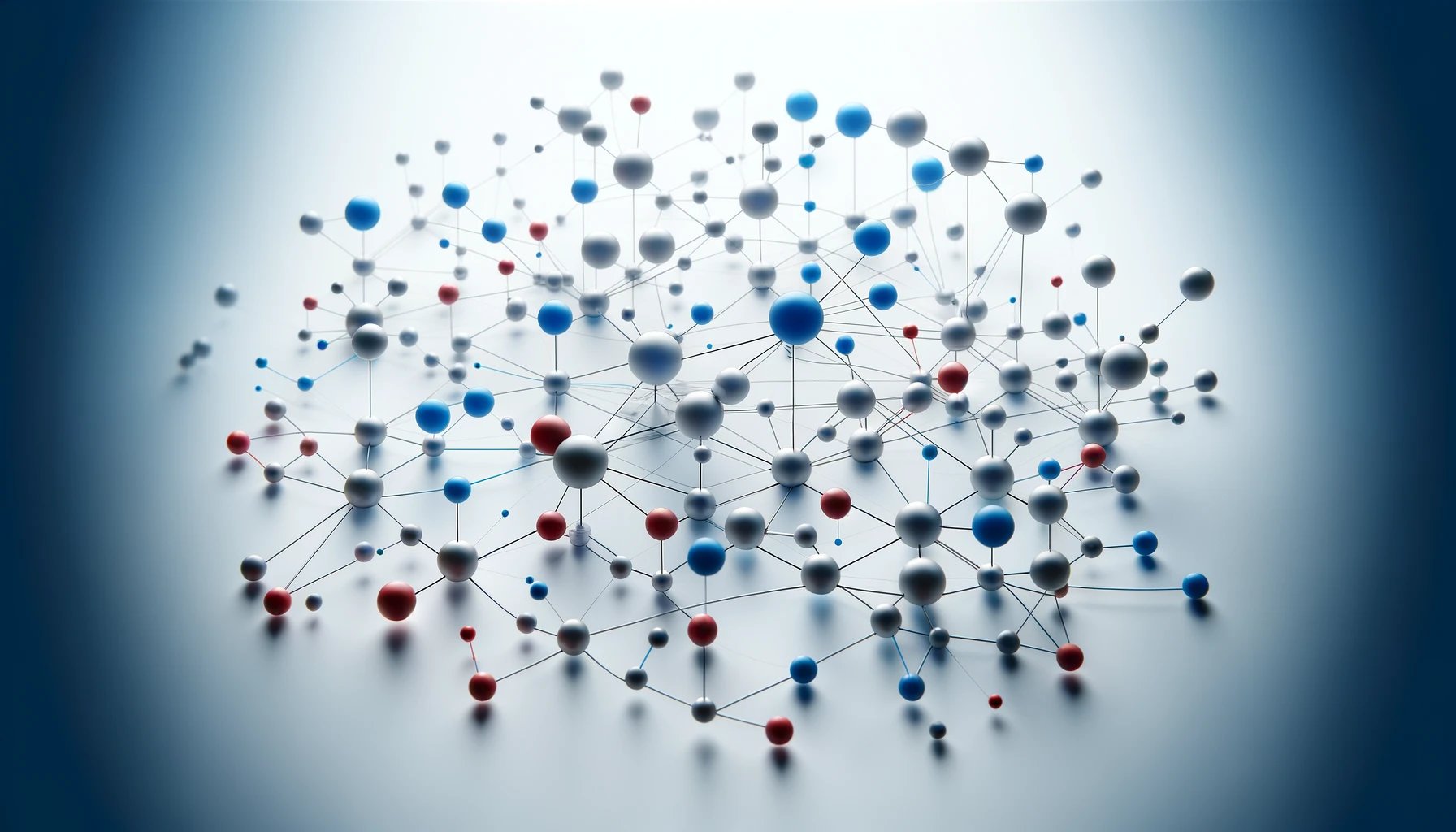In our rapidly evolving business landscape, two often discussed yet frequently confused concepts are Organization Design (OD) and Organizational Development (also OD). Although they share the same acronym, their focuses, processes, and outcomes are distinct, each playing a crucial role in the success and adaptability of organizations. Considering the prominence of the two terms, it’s surprising how frequently they are used interchangeably in interviews, meetings, and projects, often leading to avoidable misunderstandings.
Three significant developments in recent decades can help clarify the reasons behind this bewilderment.
- Over the past 15 years, the field of Organizational Design has undergone multiple significant transformations, many of which have elevated its importance within companies to unprecedented levels.
- Organizations have undergone considerable development, adopting new forms and structures. This evolution necessitates a strategic repositioning of Organization Design and Development to align with or lead these changes.
- Different types of organizations have fundamentally different views on the functions and purpose of Organization Design and Development.
With the advancement of Organization Design approaches a comprehensive examination of their application and interpretation across diverse organizational types is both timely and necessary. This article aims to clarify the roles of Organization Design and Organization Development in three archetypical organization forms, underscoring their unique differences that often result in differing – at times opposing - understandings and practices.
Distinctions Between Organization Design and Organizational Development
Organization Design refers to the intentional process of shaping and aligning the structural and processual components of an organization with its purpose, strategy, and objective. It involves creating or modifying the framework within which functionalities, tasks, responsibilities, and authorities are distributed. Its reach spans strategy, structure, system development, operating models, processes, decision-making, resource distribution, systemic culture frameworks, collaboration, and agility enablement.
The goal of Organization Design is to ensure that the company’s structure, components, and functionality optimally support its operations and strategic direction. Design decisions seek to increase collaboration, performance, productivity, agility, and value via a structural or systemic approach. But that’s not all. Given our extremely volatile times, Organization Design also aims to enable dynamic and adaptive collaboration to support continuous, mindful organizational change while strengthening the organization's unique identity and interactions.
Organizational Development, on the other hand, encompasses activities geared toward the human aspect and enhancing the skills and adaptability of an organization's members. The focus here is on improving the effectiveness of the organization through the development of its people – often in response to organizational system or strategy changes.
Organizational Development emphasizes cultivating a healthy organizational culture of continuous learning and innovation. It plays a critical role in facilitating change, ensuring that members are not only prepared for but also proactive in embracing shifts in organizational strategy and structure. Organizational Development strategies are designed to align personal growth with organizational goals, creating a synergy that enhances overall performance and well-being. By focusing on the human element, Organization Development ensures that its people are equipped, motivated, and aligned with the evolving demands of the business landscape. This holistic approach is key to maintaining agility and resilience in a dynamic market environment.
Different Views Across Various Organization Types
While Organization Design and Development both play crucial roles in the overall well-being of an organization, the incorporation of Organization Design and Development practices differs across businesses. Interestingly, we've found that these variations correlate with the company's structure, organizational design, and overall perspective on corporate life.
Organizations can be divided into 3 archetypes depending on how they view their own structures, decision-making, and development (more information e.g. Scott and Davis, Organizations and Organizing). In the following, we will take a look at how Organization Design and Development are practiced in (1) Mechanistic/Rational Organizations, (2) Organic Organizations, and (3) Team-Based or Open-Network Organizations.
Organization Design and Development in a Rational or Mechanistic Organization
Rational or mechanistic organizations are often found in traditional, established industries where routine and consistency are key to operational success. Companies with a mechanistic view are often hierarchically structured and designed to work like a well-oiled machine. Each part or department functions like a cog in a larger mechanism, with defined roles, set procedures, and clear lines of authority. This approach emphasizes efficiency, predictability, and control resulting in centralized decision-making and standardized processes.
In a rational and mechanistic system, Organization Design and Organizational Development are typically seen as two distinct and sequential processes. A car might be a good analogy (see Naomi Stanford). Before a car can be fully developed, a conceptual understanding of its purpose must be created. A pick-up truck has a fundamentally different purpose than a sports car and so the chassis and all components must be designed differently to serve the desired purpose. Once these decisions have been made and blueprints have been created, we can continue to develop the car and be assured that we will have a beautiful and functional result. The same is typically the case for Organization Design and Development in a business environment that’s driven by a mechanistic perspective.

This image depicts the distinction between Organizational Design and Organizational Development within a rational, mechanistic organization. Here, they are sequential and distinct processes: first designing the organization for its intended purpose, much like engineering a car, and then developing it further. This sequence reflects the typical operation in mechanistic organizations and the interplay between Organizational Design and Development in such environments. (Image – LC GLOBAL®/Dalle).
In a mechanistic business environment, Organization Design decisions are usually made at the highest levels. These decisions then cascade down to departments like HR or Talent Management, where they inform initiatives for people development and shape recruiting strategies. Given the mechanistic organization's emphasis on efficiency, Organization Design often involves streamlining the organizational chart and, in some cases, workforce reduction to optimize operations.
Organization Design and Development in an Organic Organization
Organic organizations view a company as a living, natural system suggesting a more fluid and adaptive approach. Unlike the rigid, hierarchical structure of mechanistic systems, organic organizations are characterized by flat hierarchies, flexibility, decentralized decision-making, and a focus on interpersonal relationships. In these environments, adaptation to changing external conditions is crucial, and innovation is often prioritized over efficiency. Teams and individuals are encouraged to collaborate and communicate openly, creating a dynamic environment that can quickly respond to new challenges and opportunities.
To illustrate how the functions of Organization Design and Development are viewed in an organic organization, let’s look at the image of the process from caterpillar to butterfly. It underscores the inherent principles of self-development and transformation in every stage, i.e., from egg, larva, pupa, and butterfly. Evidently, in such a living system, we cannot first design and then develop like in a mechanistic organization. In an organic organization, we must design spaces in which natural development can take place. Additionally, we must design spaces that can self-transform and adapt as needed.

In an organic organization, Organization Design and Development resemble the metamorphosis from larva to butterfly – a metaphor for the natural growth, transformation, and adaptability embedded in the organization's DNA. This design and development must collaborate seamlessly, fostering a self-transforming environment that nurtures both company and individual growth. (Image – LC GLOBAL®/Dalle).
In an organic organization, which functions like a natural system, the interplay between Organization Design and Organizational Development is integral to each phase of growth. Unlike in mechanistic organizations, where these elements are often distinct and sequential, in organic structures, they seamlessly blend and require mindful collaboration. Furthermore, the focus in such environments is predominantly on fostering transformation and enhancing growth and innovation capabilities.
In this context, the design of an organization is not merely a structural change or the clarification of roles and responsibilities —it's a shift in the organization's very DNA. In an organic organization, it is evident then that Organization Design and Development are not just parallel tracks; they must be thoughtfully intertwined.
Organization Design and Development in an Open Network Organization
In an open or network or team-based organization, all parts are seen as interconnected with their internal and external environment, emphasizing adaptability and continuous learning. This perspective doesn’t view an organization as an isolated entity but as part of a larger ecosystem, where partnerships, cross- and intra-collaboration as well as external influences play a significant role. These systems thrive on diversity, information exchange, and a flexible, at times self-organizational, approach to management. Open network and team-based organizations are particularly common in industries that are rapidly evolving or heavily reliant on technology and innovation, where staying connected with external trends and networks is vital for success.

In organizations seen as open networks or team-based structures, organization design takes on a vital role. It focuses on fostering flexible connections, smooth data flow, and dynamic roles. Essentially, Organization Design shapes a framework that promotes desired behavior and growth, absorbing some aspects of Organizational Development. (Image – LC GLOBAL®/Dalle).
A network-based organization thrives on dynamic role assignment. Roles and responsibilities are more fluid and can change based on project needs. Employees may shift between different teams and roles as required. Evidently, in a team-based or open-network organization, the “DNA” of the company must be designed with utmost focus on all living and moving parts including:
- People (employees, customers, suppliers.)
- Growth, development, and natural transformation capabilities.
- External connectors, environment, developments, and unforeseeable events.
The role of Organization Design in an open network is to create a seamless data flow, connections, and cross-collaboration that allow for self-organization – by design. The design must support de-centralized decision-making in some areas and centralized decision-making in other areas.
In a team-based organization, the role of organization design is increasingly prominent, playing a pivotal part in shaping the framework within which teams operate. It is instrumental in establishing the processes and connections that not only facilitate but actively drive desired behaviors and outcomes. This strategic positioning of organization design means that it absorbs responsibilities traditionally held by organizational development, effectively integrating elements like team dynamics, communication channels, and decision-making processes into the very architecture of the organization. This shift underscores the evolving nature of organizational structures, where design is not just about the physical or hierarchical arrangement, but deeply intertwined with how teams function and thrive – and even how people develop.
Why Does it Matter?
Organizations are perceived and structured in fundamentally different ways. This perspective significantly influences our understanding of the roles and responsibilities within Organization Design and Organizational Development. The importance of this understanding cannot be overstated. In essence, each of the three types of organizations can be effective, depending on the context in which a company operates. However, the interplay between Organization Design and Development may have to change dependng across organization type to yield positive outcomes.
Additional challenges arise when consultants or executives misinterpret the nature of organizational forms and their design and development needs, or when they overestimate the capacity for transformation, neglecting the developmental stage and mindset of the particular company. Such misjudgments can lead to initiatives that are not only ineffectively executed but can also be detrimental. Companies must recognize the specific organizational types that their Organization Design and Development efforts seek to serve. This clarity facilitates a unified understanding of achievable goals and the methodologies to reach them.
In short: Organizational Design and Development must practice what they preach by first ensuring that its strategies and project or initiative designs are in harmony with the overarching strategy of the company and its specific initiatives. This may also mean that Organization Design consultants have the obligation and opportunity to educate and advise a client should they plan an initiative that shows a clear misalignment - even if that means that the project must be re-designed.










